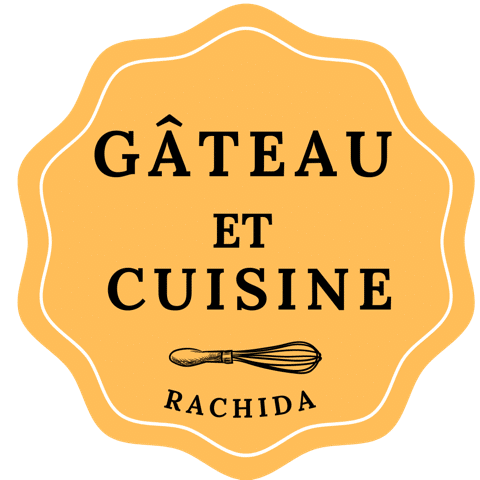
Easy Homemade Quince Paste
As its name suggests, quince paste, also known as membrillo, is a fruit paste made from quinces and sugar. It’s a simple confection to make that requires neither a thermometer nor additives, unlike other jelly candies such as lemon pâte de fruit. Quince is naturally rich in pectin, which helps achieve a firm and delicious texture.
Making your own homemade quince paste is not as difficult as you might think. The recipe is very simple, made with just two ingredients and no added gelling agent, agar-agar, gelatin, or confectionery sugar. You get a quince paste with a melt-in-your-mouth texture and authentic taste. It’s a treat we love to enjoy, like chocolates, marshmallows, or nougat. It’s perfect for fully enjoying quince season and also makes an excellent gourmet gift idea for Christmas.
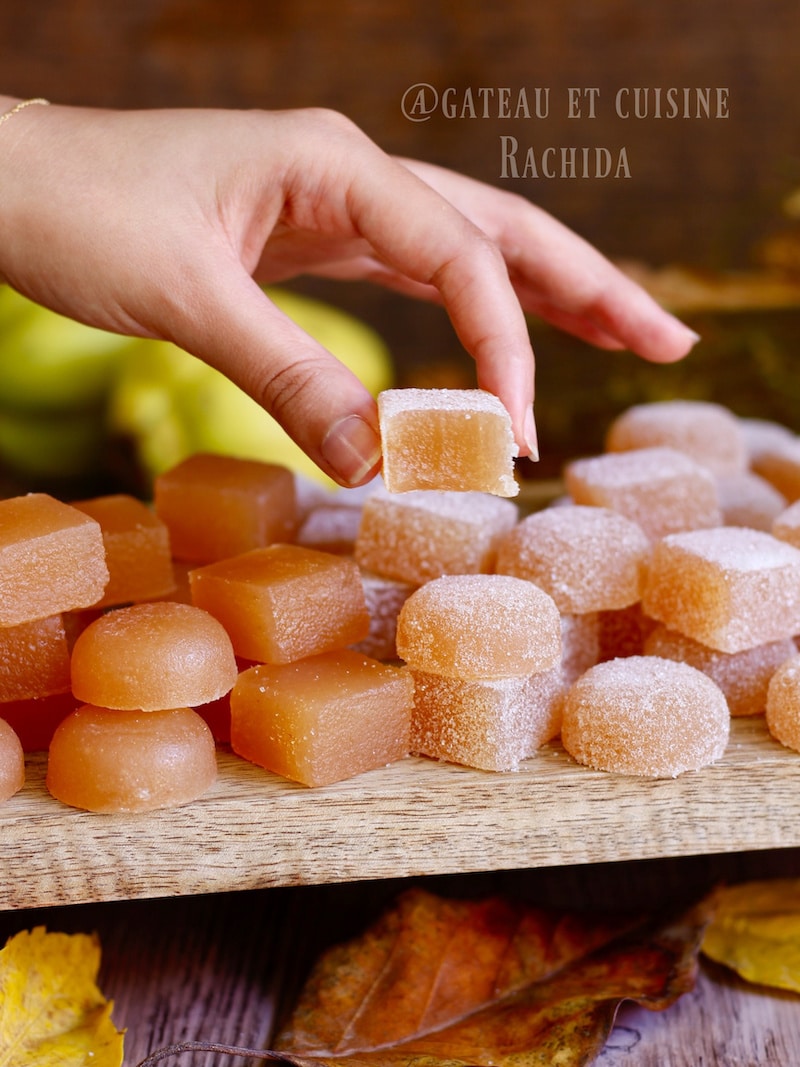
Table of Contents
Tips
If you want to achieve a beautiful amber-pink quince paste, do not add lemon to the cooking water. However, if you prefer a lighter paste, like mine, add lemon to the water to prevent the quinces from oxidizing and changing color.
To make successful quince paste, it’s important to cook the fruit thoroughly so it sets properly after cooling. The paste must cook long enough to become very thick. Towards the end of cooking, when it boils, it forms craters on the surface and can splash when it falls back into the pot. It’s ready when it’s dense and, when you take a little with a spoon and let it drop back into the pot, it forms a thick mound. The paste usually reduces by one-third of its initial volume.
Video Recipe
Ingredients
Note: Find the printable recipe card at the end of the article.
- 6 large quinces
- Sugar (equal to the weight of the cooked quinces)
- 2 to 4 packets of vanilla sugar
- 2 teaspoons of vanilla extract

Preparation Steps:
Cooking the Quinces
Choose ripe quinces with a beautiful yellow color and smooth skin. Avoid any with dark spots, as these indicate worm damage.
Rub them gently by hand or with a sponge under running water to remove the fuzz.
Cut the quinces in half on a board with a large knife, then cut each half in two again. Peel them and remove the hard cores and seeds.
If you also plan to make quince jelly, do not discard the peels and seeds.
Place the cleaned quince quarters in a large pot filled with lemon water. If you want to save the cooking water for jelly, use an amount of water equal to the weight of the quinces (1 kg of quince = 1 liter of water).
Cut the quarters into cubes. For the jelly, place the peels and seeds in a clean muslin cloth, tie it securely, and place it in the pot.
Bring everything to a medium heat and cook until the quince pieces are tender. Check for doneness by piercing a piece with a knife or crushing it between your fingers, it should mash easily.
Drain the quinces in a colander and reserve the cooking water if you plan to make jelly. Strain it and keep it until you’re ready to prepare the jelly; otherwise, you can discard it.
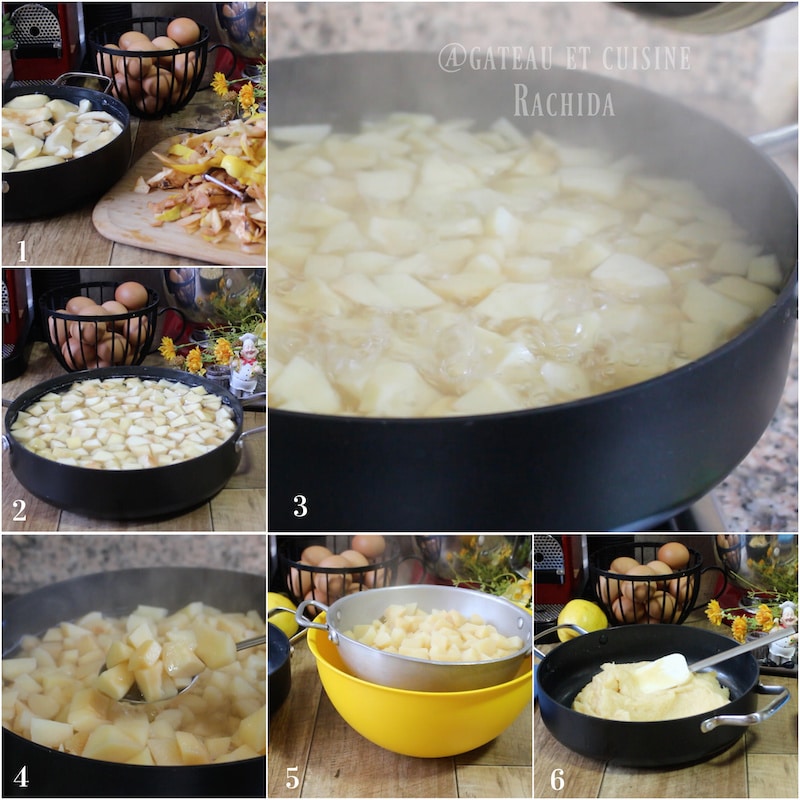
Preparing the Quince Paste
Weigh the cooked quince pieces to determine their total weight.
Blend them into a smooth purée and pour it back into the pot.
Weigh out the same amount of sugar and add it to the pot as well. In this recipe, I had 1.238 kg of cooked quinces, so I added an equal weight of sugar:
| 1.238 kg of quinces = 1.238 kg of sugar |
Add the vanilla sugar and/or vanilla extract.
Mix everything well with a wooden spoon and bring to medium heat.
Stir frequently, scraping the bottom of the pot well. Cover partially, leaving a small gap to allow the steam to escape.
Cooking takes about 30 minutes from the time it starts to boil, but this can vary depending on the amount of quince and the heat of your stove.
The quince paste will gradually reduce in volume and change color. It thickens, becomes shiny, and takes on a translucent appearance.
It forms craters as it bubbles, so be careful not to get burned. I recommend watching this step in the video.
When you scoop up some paste with a spoon and let it drop back into the pot, it should fall in a thick mound. The paste will have reduced by about one-third of its initial volume.
The quince paste is now fully cooked.
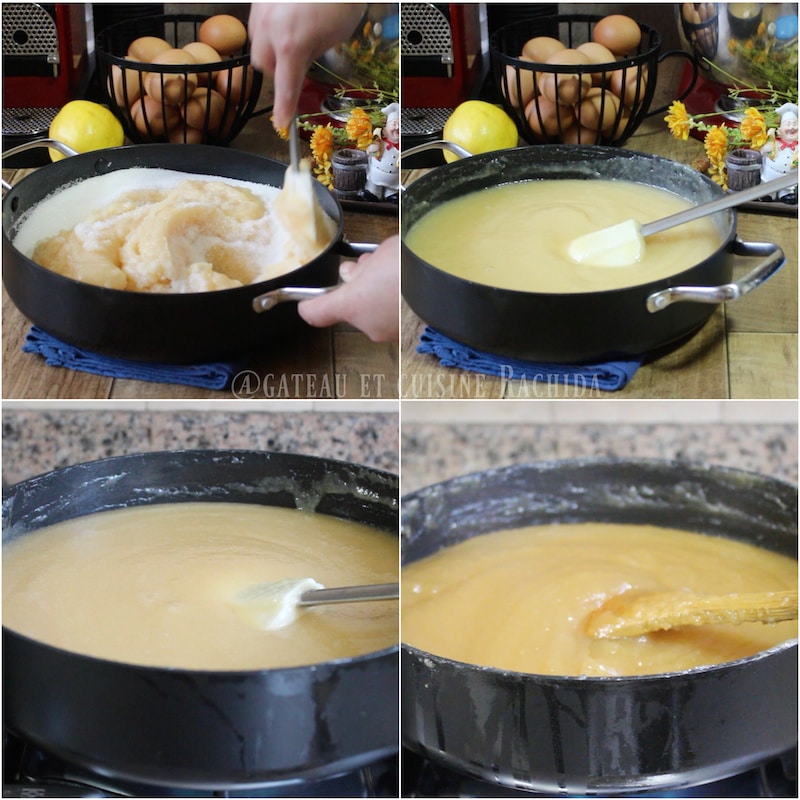
Drying the Quince Paste
Place a frame on a Silpat mat or a sheet of parchment paper.
If you want to use silicone molds, place them on a baking sheet.
Pour the still-hot quince paste immediately after removing it from the heat. Add enough to the frame to reach a thickness of about 2 cm.
To fill silicone molds, transfer the quince paste into a piping bag or a freezer bag. Cut off the tip and fill the mold cavities. Tap the tray gently to level the paste.
Use an offset spatula to smooth the surface and remove any excess.
Cover with a plate or a clean cloth and let dry in a dry, well-ventilated place. I usually leave mine on the living room table.
Drying time will vary depending on the ambient air and room temperature. My paste was completely dry by the third day. To check, press it lightly with your finger, it should resist pressure and no longer be sticky.
Unmold onto a board and cut into cubes or strips.
You can let it dry for another day or two, turning it occasionally.
Roll in sanding sugar if desired, or leave plain.
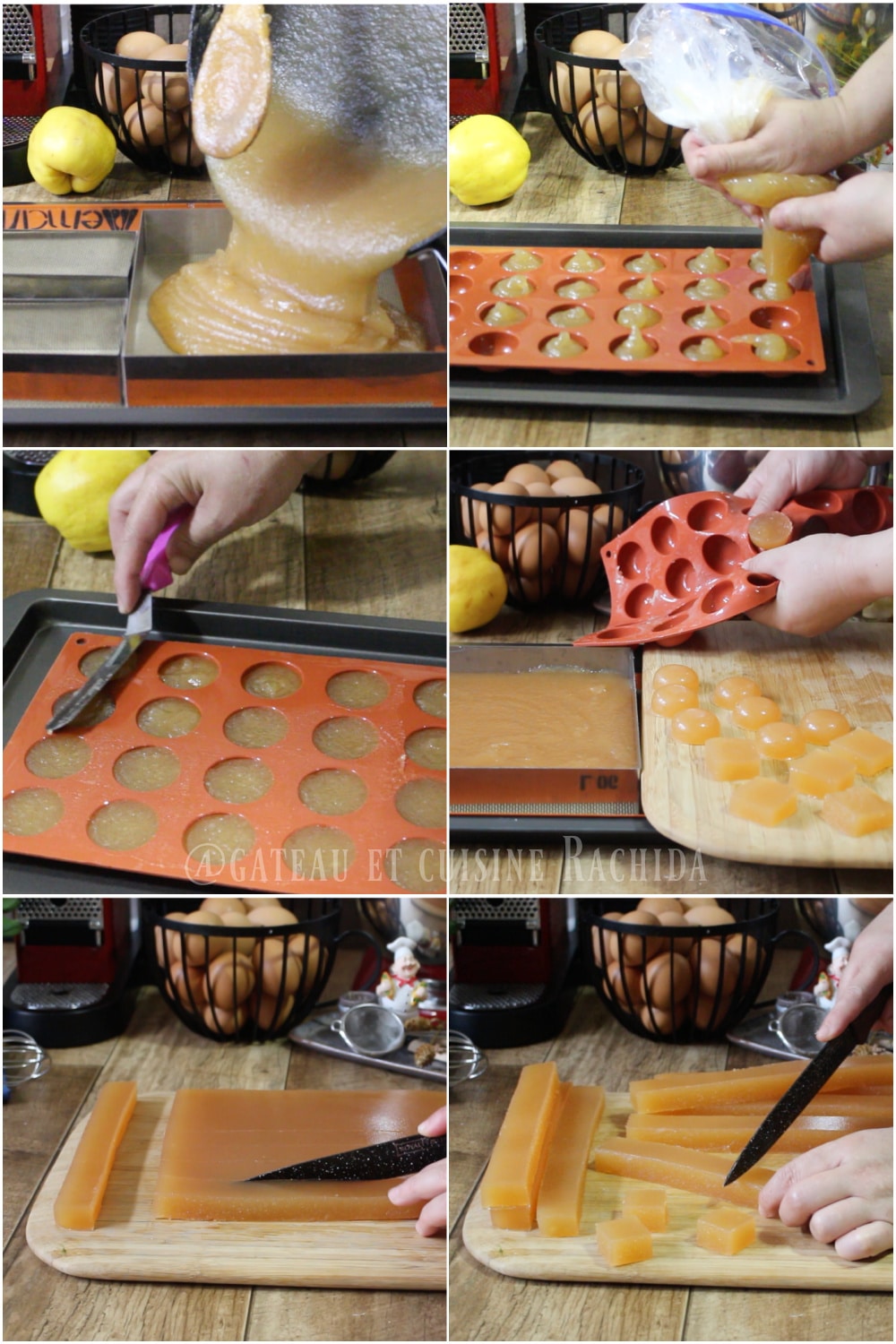
Storing Quince Paste
Once the quince paste has dried completely and you have cut or unmolded it, you can store it without rolling it in sugar.
Place it in an airtight container, separating each layer with parchment paper.
Stored this way, the quince paste will keep for up to one month in the refrigerator or up to one year in the freezer.
When you want to enjoy it, remove it from the freezer and place it on absorbent paper, with another sheet on top. Let it thaw and dry off any excess moisture.
Then roll it in granulated sugar if desired and enjoy.
I took a photo of this quince paste, which had been in the freezer since last November.
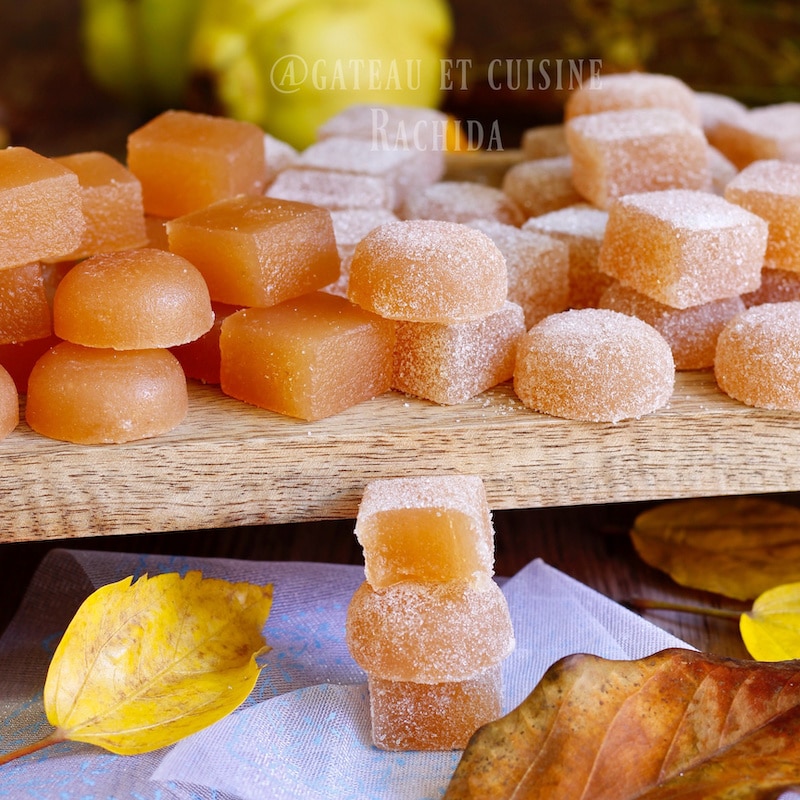
Now all that’s left is to offer this quince paste to your loved ones. It can make a delicious gourmet gift box for the holiday season. You can prepare it now.

Quince Paste Recipe (without Gelling Agents)
INGREDIENTS
- 6 large quinces
- Sugar equal to the weight of the cooked quinces
- 2 to 4 packets of vanilla sugar
- 2 teaspoons of vanilla extract
PREPARATION
Cooking the Quinces
- Choose ripe quinces with a beautiful yellow color and smooth skin. Avoid any with dark spots, as these indicate worm damage.
- Rub them gently by hand or with a sponge under running water to remove the fuzz.
- Cut the quinces in half on a board with a large knife, then cut each half in two again. Peel them and remove the hard cores and seeds.
- If you also plan to make quince jelly, do not discard the peels and seeds.
- Place the cleaned quince quarters in a large pot filled with lemon water. If you want to save the cooking water for jelly, use an amount of water equal to the weight of the quinces (1 kg of quince = 1 liter of water).
- Cut the quarters into cubes. For the jelly, place the peels and seeds in a clean muslin cloth, tie it securely, and place it in the pot.
- Bring everything to a medium heat and cook until the quince pieces are tender. Check for doneness by piercing a piece with a knife or crushing it between your fingers, it should mash easily.
- Drain the quinces in a colander and reserve the cooking water if you plan to make jelly. Strain it and keep it until you’re ready to prepare the jelly; otherwise, you can discard it.
Preparing the Quince Paste
- Weigh the cooked quince pieces to determine their total weight.
- Blend them into a smooth purée and pour it back into the pot.
- Weigh out the same amount of sugar and add it to the pot as well. In this recipe, I had 1.238 kg of cooked quinces, so I added an equal weight of sugar:
- 1.238 kg of quinces = 1.238 kg of sugar
- Add the vanilla sugar and/or vanilla extract.
- Mix everything well with a wooden spoon and bring to medium heat.
- Stir frequently, scraping the bottom of the pot well. Cover partially, leaving a small gap to allow the steam to escape.
- Cooking takes about 30 minutes from the time it starts to boil, but this can vary depending on the amount of quince and the heat of your stove.
- The quince paste will gradually reduce in volume and change color. It thickens, becomes shiny, and takes on a translucent appearance.
- It forms craters as it bubbles, so be careful not to get burned. I recommend watching this step in the video.
- When you scoop up some paste with a spoon and let it drop back into the pot, it should fall in a thick mound. The paste will have reduced by about one-third of its initial volume.
- The quince paste is now fully cooked.
Drying the Quince Paste
- Place a frame on a Silpat mat or a sheet of parchment paper.
- If you want to use silicone molds, place them on a baking sheet.
- Pour the still-hot quince paste immediately after removing it from the heat. Add enough to the frame to reach a thickness of about 2 cm.
- To fill silicone molds, transfer the quince paste into a piping bag or a freezer bag. Cut off the tip and fill the mold cavities. Tap the tray gently to level the paste.
- Use an offset spatula to smooth the surface and remove any excess.
- Cover with a plate or a clean cloth and let dry in a dry, well-ventilated place. I usually leave mine on the living room table.
- Drying time will vary depending on the ambient air and room temperature. My paste was completely dry by the third day. To check, press it lightly with your finger, it should resist pressure and no longer be sticky.
- Unmold onto a board and cut into cubes or strips.
- You can let it dry for another day or two, turning it occasionally.
- Roll in sanding sugar if desired, or leave plain.
Thank you for visiting my blog and for your comments.
